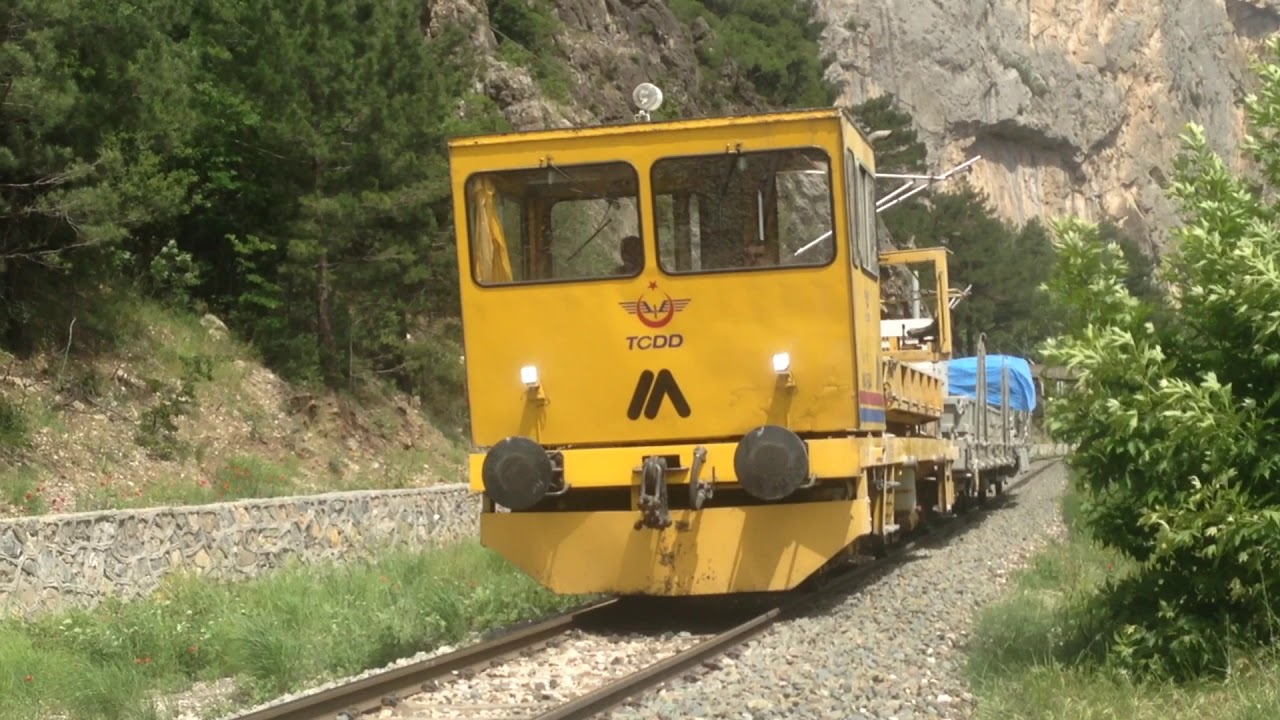Railway utility vehicles are specialized machines capable of moving along the tracks and performing a wide range of tasks, from material transport to track alignment during maintenance and repair operations. Ensuring the continuity and safety of railway infrastructure depends not only on high-quality construction processes but also on effective maintenance and repair practices. As a key component of modern railway maintenance systems, utility vehicles play an integral role in this process. These vehicles are used for a variety of tasks, including transporting maintenance equipment, conducting mobile repairs, handling ballast, and loading sleepers and rails (MYK, 2012a).

A TCDD Utility Vehicle (TCDD Teknik)
Technical Features and Equipment
Railway utility vehicles are typically diesel-powered, multifunctional machines capable of operating independently on rail tracks. The following are their core technical components:
- Tipping Bed: Used for transporting materials such as sand, ballast, and track components. It can also be used to move small machinery.
- Crane System: An autonomous crane increases operational efficiency in loading and unloading tasks. Attachments like magnets or other specialized tools can be mounted to its end.
- Generator Unit: Provides power for magnets and other electronic systems.
- Modular Add-on Systems: Components such as excavator arms, personnel platforms, and bridge inspection devices can be integrated.
Some advanced models are capable of operating on both road and rail, offering significant operational advantages, particularly on single-track lines or in high-traffic rail segments.
Operational Use and Functions
Railway utility vehicles are employed in a wide range of operational contexts:
- Track Maintenance: Tasks include ballast regulation, sleeper replacement, and rail alignment.
- Material Transport: Delivery of heavy materials such as rails, sleepers, and signaling equipment to work sites.
- Repair and Intervention: Ideal for rapid response to track deformations and damages.
- Personnel Transport: Workers can be transported via wagons attached to the rear section of the vehicle.
Their load-carrying capacity enables efficient handling of logistical operations, leading to significant time savings within the maintenance workflow.
Performance Evaluation Compared to Manual Labor
Utility vehicles offer numerous advantages over manual labor-based systems:
- Speed: Capable of covering larger areas in a shorter time.
- Precision: Equipped with advanced sensors and automation systems, enabling more accurate measurements and interventions.
- Occupational Safety: Reduces the risk of workplace accidents by eliminating the need for manual handling of heavy loads.
These benefits translate into cost-effective and technically sustainable solutions, especially for maintenance activities conducted on long railway lines.
Railway utility vehicles stand out as multifunctional machines playing a critical role in the maintenance, repair, and modernization of rail systems. Owing to their technical features and operational flexibility, they hold a strategic position in modern railway management. Widely used by TCDD and its affiliates in Türkiye, these vehicles are essential tools for ensuring the long-term sustainability of railway infrastructure. The integration of digital control systems into such vehicles is expected to mark the beginning of a new era in railway maintenance in the near future.

